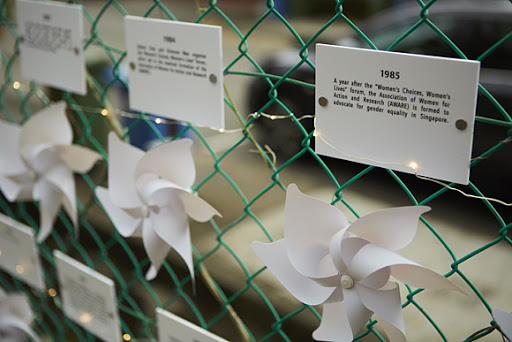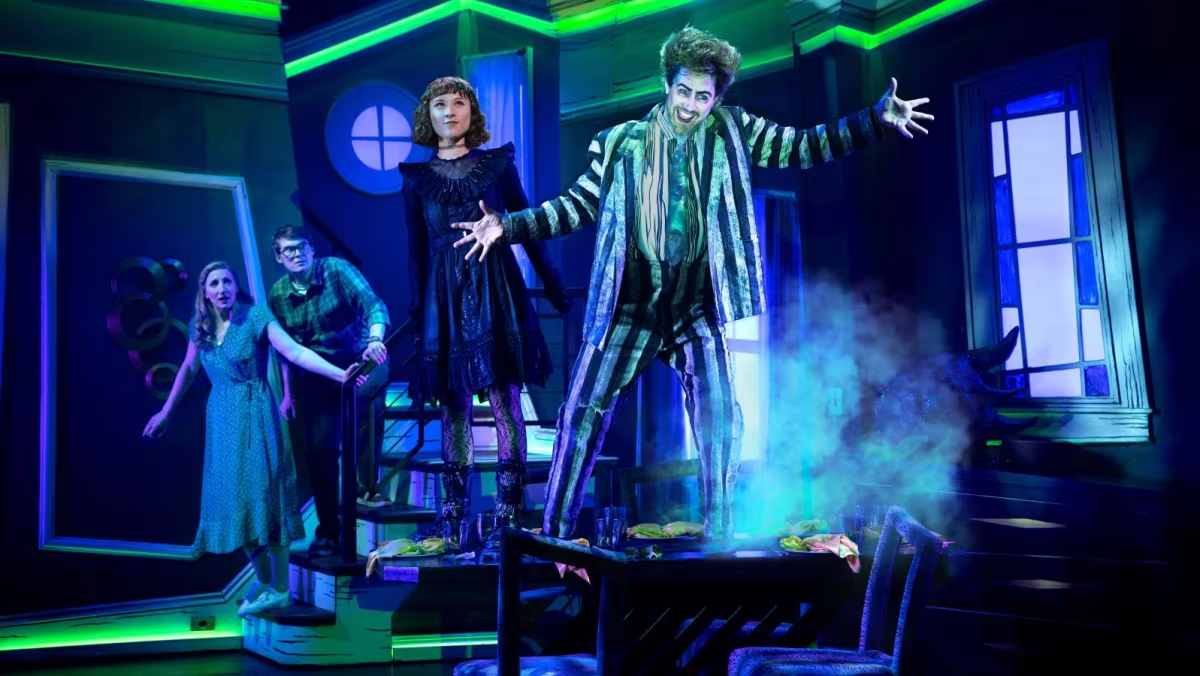Written by Cheryl Tan
On an unassuming street in Holland Village, audience members step into a house and watch a family’s narrative unfold. FLOWERS is conceptualised and led by Drama Box’s Resident Artist Han Xuemei, and developed in collaboration with Jean Tay, Darren Ng, and Lim Woan Wen. This experiential installation investigates the cost of patriarchal violence around and within us, and situates itself specifically within a familial setting. It invites audiences into a house in which the semblances of patriarchal violence are left behind, as well as find their own narratives hidden within.
This piece gives audience members the freedom to explore the house on their own, simultaneously weaving their personal interpretation of a narrative, with script written by Jean Tay and delivered through a cassette tape. As such, each person’s takeaway of what might or might not have happened within this household will inevitably be different. Because of the individualised nature of this experiential piece, I will attempt to share my personal experience and what I discovered about the piece, myself, and society at large.

Audiences are given a headset each which conveyed snippets of a family history. There is no explicit mention that the family discussed on tape is the same family that might have inhabited the house, but most audiences might assume so. As it unfolded, this narrative seemed to be words belonging to a lady (a daughter, perhaps, the eldest) addressed to her younger brother. She recalls memories they shared together as children and tells him about their family in the wake of their mother’s passing, with emphasis on what their father’s actions had done to their family.
She explores how, after years of violence (both explicit and implicit) grounded in patriarchal values and dictatorial conformity to gender roles, both she and her brother seemed to have had no better choice but to leave, her brother cutting ties entirely.
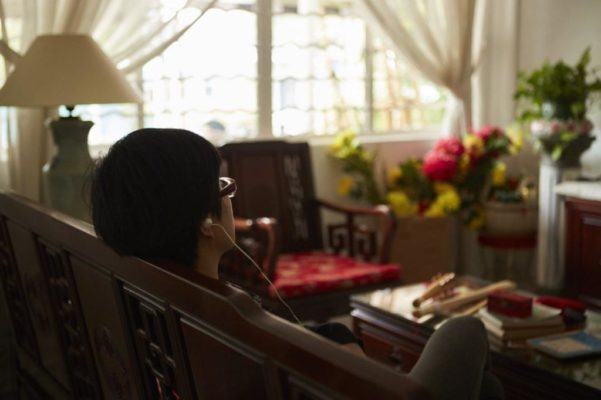
PART I
We entered the house, which functioned as a large-scale installation. The tape played. My fellow audience members began exploring the space where each object was intentionally curated for the show. I appreciate the amazingly pedantic attention to detail, which allowed sheer happenstance to create shocking moments of emotional arrest.
One of these moments was when I entered the backyard of the house and found a seated man staring at the laundry line that had been hung up. Although other parts of this house indicated that it probably belonged to a family unit, I realised that there were only shirts, knickers, and shorts hung on the laundry line. These were clothes that belonged to just one person. Similarly, there was only one toothbrush in the bathroom.
What had happened to the family, where was everyone else, and was this man the only one left behind? Was this the consequence of having perpetuated violence on the people you love?
This elderly man sat staring into space would later share the space with us, going about his daily activities unaware of the visitors in his home. Was this the man who had inflicted so much violence on his family? How could he have done this, and did he know how much his family had had to suffer? And would I be able to hold him entirely accountable, seeing how the aftermath of this destruction seemed to be loneliness and regret? This made me feel like a ghost, present yet unintruding. We were silent audiences privy to the present actions of a man but strangers to his past.
If we lived our lives knowing there were silent observers around us, would we live it differently?
I walked the length of the house several times and finished listening to the recording. The aftermath of narrative heard on the tape was difficult to sit with, and left a heavy sense of helplessness inside me. Perhaps because of how personally this piece had touched me, especially in conveying the need to conform to traditional gender roles and expectations and how a failure to do so seemed to make you a lesser person, this sense of helpless entrapment made me anxious and, simply put, unable to do anything. It took some time to grasp the awareness that my body perceived as a threat. Where people usually claim to have either Fight or Flight responses to threatening situations, mine is a third, Freeze. I found myself sitting on the floor of the living room until the entire recording had ended, and then listening to the piano instrumental at the end trying to figure out why those tunes were so familiar yet distant, and why I could not place my finger on what those tunes were or why this entrapment felt so familiar yet so incapable of being immediately recognised; why the aftermath of violence too, sometimes feels familiar and yet so incapable of being immediately recognised.
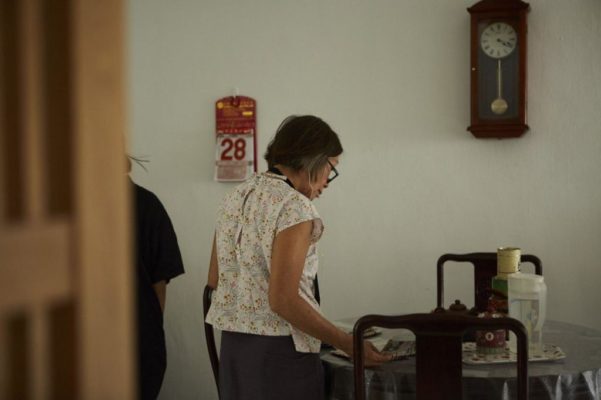
PART II
Although we were given the whole of 70 minutes to explore the house as we wished, I did not realise that two particular rooms could be entered. It was only towards the end (in the last 20 minutes or so) that I realised the two rooms, which I understood as belonging to the boy and the girl, could be opened and entered. This sent me into a frenzied panic.
What did I miss, and how could I have missed two entire rooms?
It was in these two rooms that the line between imagination and reality truly started to blur due to the curation of items.
In the girl’s room I found home economics books and sewing guides in the drawers. I also realised the layout was minimal. An ironing board sat in the corner. Was that all she did in her free time, help out in the kitchen and iron clothes? However, it was in exploring the boy’s room that I was nearly moved to tears. There were Science encyclopaedias and copious issues of Superman comic books, figurines, photo albums, books on photography, as well as beautiful Marvel posters. Perhaps it was because all this looked like everything I had grown up loving too — the love of which I had, until recently, spent years trying to suppress because these were not toys meant for girls. Perhaps it was because I knew what it meant to find refuge in taking photographs of waves on the beach where the world is quiet(er) for once, and hope in books and comics in which heroes, too, struggle to be all they are supposed to be; who fall yet always rise again. And what about the girl? What did she have to turn when escape seemed the only cure for reality? Only her ironing board?
I found myself frantically rummaging through any cupboard I could find in the last few minutes, almost as if I was searching for something — something I had lost, or perhaps even answers or explanations, anything that would help me make sense of what had happened and that would endow this narrative with some voice of logic. It was also then that I realised that there were no answers to be found — not in the items that have been left behind, not in the photographs or dusty comic books, folded origami cranes or flowers, not in the spaces inherited by a family that was once and could have had the possibility to be whole. The answers were there and not there — nowhere and everywhere, all at once.
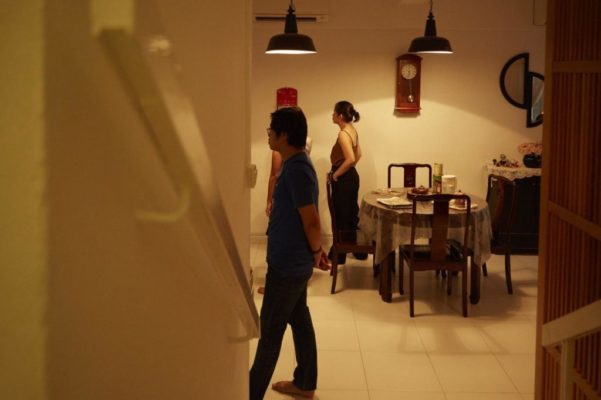
PART III
At the 70-minute mark, the doorbell rang. In the show I attended, the man that had been unknowingly sharing the space with us came downstairs and walked over to the shoe rack. He struggled to keep his balance as he was putting on his shoes, his age clearly catching up with and disabling him. Was this silent, empty shell what was left of the man who had inflicted so much pain and emotional damage to his family? Did he have any idea how it all fell apart, because still I wanted answers to a question I knew full well had none. Was he resentful? Or remorseful? As these thoughts ran through my mind his glasses slipped off onto the floor in the struggle to secure his shoe on. I had to stop myself from helping him to pick it up. Perhaps even the worst of us someday will confront consequences that are too much for a human heart to bear.
I wanted to ask him (as mentioned in the film Arrival), “If you could see your life from start to finish, would you change anything?”
After the experience, we sit around a table termed the ‘Decompression Space’, a space where audience members are free to chat and discuss their different and personal interpretations of the experience. Though this is not a mandatory part of the experience, I highly recommend sitting down and sharing your experience, or even just listening and recognising the different ways we experience the exploration. I found this space crucial simply because so much of this experience is rooted in the realisation of the extent of the damage done by the patriarchal values we have unknowingly inherited and are privy to perpetuating. It was helpful in processing the experience of having literally walked through the aftermath of what seemed a silent war – consequences of what this environment had created without fully understanding the reasons why.
While hope may feel lost after experiencing the destruction of the family whose house we explore, it is perhaps more clearly found and illuminated in the conversations we take the time to have with fellow audience members, and with friends and family in our personal lives. We learn to recognise of how the most subtle acts of violence are usually the most damaging ones, and how, because of the nature of the society we live in, most of us are find ourselves both victim and perpetrator of these destructive patriarchal values, and some of us find ourselves being more of one or the other.

PART IV
Please note that all the opinions and interpretations mentioned in this article are my own. This is why FLOWERS ought to be attended and experienced in person. There are no answers or directions to this piece, only hints and your imagination and interpretative abilities. It is this very ambiguity and subtlety that makes this piece so haunting, and which highlights how the most damaging forms of emotional destruction and violence are usually the ones that are the most implicit and silent. Because this way, it can be covered up. This way, we start to wonder if there was any damage done at all, when under the illusion of a pristine surface, the poison has already taken its hold.
But violence need not have the last laugh, unless we let it.
Drama Box’s FLOWERS has shown us that sometimes hope too, is silent. Sometimes it is found and seen in conversations we brave through, because it is in these conversations that we realise that unless we take the time to actively recognise and acknowledge the consequences and cost of patriarchy and the destruction it leaves in its wake, there will always be a silent war — one that we of all genders and sexualities will find ourselves fighting our entire lives.
And unless we open our eyes to the silent but swift violence that pervades, we still unknowingly walk through its battlefield and its aftermath every single day.
==
Stay updated and social with Popspoken: Telegram| Facebook | Twitter | Instagram


